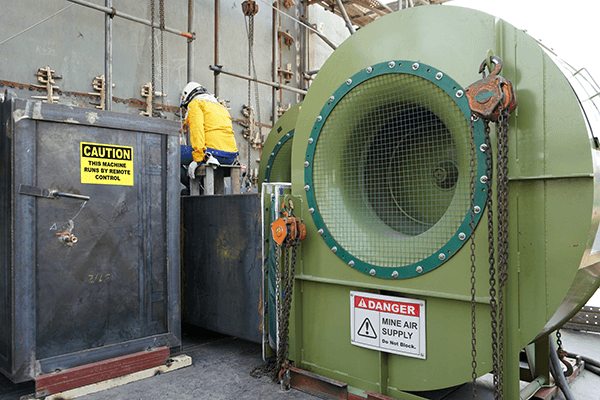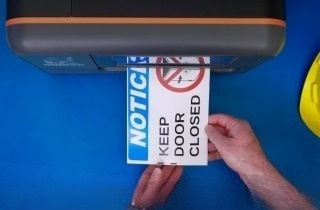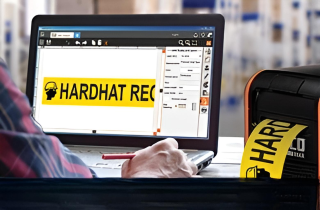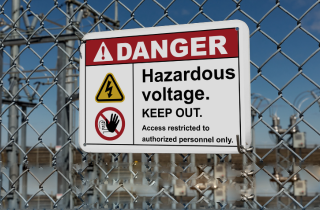Beneath the Surface: How Engineering and Safety Protect Tunnel Workers

Tunnels play a crucial role in modern infrastructure, providing passageways for vehicles, trains, and utilities beneath mountains, rivers, and even oceans. While their construction has advanced significantly, tunneling remains a hazardous undertaking, requiring specialized engineering techniques, extensive planning, and rigorous safety protocols to protect workers and the public.
Tunnel construction presents inherent risks, including structural collapses, flooding, toxic gas exposure, and fire hazards. According to the Bureau of Labor Statistics (BLS), tunnel construction accidents have resulted in multiple fatalities and injuries in the past three years. In one high-profile case in 2023, a tunnel collapse in India left 41 workers trapped for days, highlighting the need for rigorous safety protocols.
Federal Agencies, including the Occupational Safety and Health Administration (OSHA), have outlined strict safety guidelines for tunnel projects. These measures include reinforced tunnel linings, ventilation systems and continuous air quality monitoring.
Evolution of Tunnel Construction: Then and Now
Tunnel construction has undergone significant changes since the first tunnels were built in the United States. Comparing early tunnel projects to modern-day construction reveals the advancements in engineering, safety protocols, and worker protections that have been implemented over the years.
Early Tunnel Construction: Challenges and Risks
The first tunnel in the U.S., the Musconetcong Tunnel, was completed in 1875 in New Jersey for the Morris Canal. Early tunnel construction relied on manual labor, rudimentary tools, and minimal safety measures. Workers—often called "sandhogs"—faced constant threats, including:
- Cave-ins and collapses occurred frequently due to inadequate reinforcement in tunnel linings.
- Toxic gas exposure causes suffocation or triggers explosions.
- Flooding frequently occurred due to the lack of effective waterproofing techniques.
- Health hazards arise from poor ventilation and prolonged underground shifts, often leading to decompression sickness.
Modern Tunnel Construction: Safety and Innovation

Today, tunnel construction benefits from advanced engineering and stringent safety regulations. OSHA and other global regulatory agencies enforce critical safety measures, reducing the risk of accidents and fatalities. Key improvements include:
- Tunnel Boring Machines (TBMs): Automate the excavation process, significantly reducing human exposure to dangerous conditions.
- Advanced ventilation systems: Actively manage airflow to eliminate toxic gases and protect worker safety.
- Fire-resistant materials and emergency protocols: Modern tunnels use smoke ventilation, fire suppression systems, and clearly mark emergency exits to enhance safety and minimize fire hazards.
- Worker training and personal protective equipment (PPE): Workers undergo mandatory safety training, wear respiratory protection, and use real-time communication systems to actively prevent workplace injuries.
- Automated excavation and ground support systems: These actively stabilize unpredictable terrain and prevent collapses.
Tunnel Construction Techniques and Safety Considerations
Tunnels are built using various methods, depending on the terrain and purpose. One widely used technique is the immersed tube method, where prefabricated tunnel sections are placed in a trench and connected underwater. Another approach involves TBMs, which excavate rock while simultaneously reinforcing tunnel walls.
While these methods have improved efficiency, construction site safety remains a primary concern. Historical tunnel collapses and gas-related fatalities underscore the importance of risk mitigation in every stage of construction.
Advances in Tunnel Construction Safety
New technologies continue to improve tunnel safety:
- Larger tunnel diameters expand to meet growing infrastructure needs.
- Improved tunnel boring machines enhance excavation efficiency and protect workers by minimizing exposure to hazardous conditions.
- Fire-resistant tunnel linings and ventilation systems actively protect tunnels from fire hazards by containing flames and ensuring proper airflow to prevent smoke accumulation.
- Automated excavation and ground support systems actively stabilize unpredictable terrain, ensuring structural integrity and preventing collapse.
The Detroit-Windsor Tunnel: A Case Study
The Detroit-Windsor Tunnel, constructed in 1930, stands as one of the first large-scale underwater tunnel projects in North America. Engineers used the innovative immersed tube method, where pre-fabricated steel sections were sunk into a trench and sealed together. While innovative for its time, it lacked many modern safety features now standard in tunnel construction. According to the Detroit-Windsor Tunnel official website, the tunnel now incorporates state-of-the-art air filtration systems, updated fire suppression technology, and emergency communication networks to ensure passenger and worker safety.
This absence of safety features meant that workers were at higher risk of exposure to toxic fumes, fire hazards, and structural instability. Without proper construction site safety measures, workers relied on outdated methods to manage risks, increasing the likelihood of accidents. The tunnel’s original design also lacked safety signage and emergency exits, making it difficult for workers and travelers to navigate in case of an emergency.
Today, the tunnel has been modernized with OSHA safety guidelines, incorporating advanced ventilation systems, fire-resistant materials, and hazard labels to warn workers and travelers of potential dangers. These improvements demonstrate the ongoing commitment to safety signage and risk prevention in tunnel infrastructure projects.
The Role of Visual Communication in Safety
One of the most critical aspects of tunnel safety is effective visual communication. In high-risk environments like confined spaces, clear and consistent safety signage is essential for preventing accidents and guiding workers through emergency situations.
- Multilingual signage: Given the international nature of construction workforces, tunnels now incorporate signage in multiple languages to ensure that all workers, regardless of native language, can understand critical safety instructions.
- High-visibility markings: Brightly colored, illuminated, and reflective signage helps workers identify escape routes, fire extinguisher locations, and oxygen supply points even in low-light or smoke-filled environments.
- Digital and interactive Displays: Some modern tunnel projects integrate digital safety boards that provide real-time hazard alerts, temperature readings, and ventilation status updates.
- Standardized symbols: The use of universally recognized symbols helps workers quickly interpret safety instructions, reducing response time in an emergency.
Tunnel Construction and Visual Communications
There are two separate phases for safety signage during construction and post-construction. During construction, hazard signs such as electric shock warnings, falling rock alerts, and exit locations are prominently displayed. Safety equipment locations and standard OSHA safety signs are required to minimize risk. Depending on the type of tunnel, some signage is also present in fluid conveyance tunnel, including sewer and water tunnels.
For transit and highway tunnels, signage identifies firefighting equipment, exit locations, and emergency call boxes for fire and police assistance. Engineers and safety professionals continue to refine these systems to ensure they meet evolving safety standards.
The Future of Tunnel Engineering
Urban expansion and transportation demands are driving innovation in tunneling. Engineers are developing subterranean rail networks, underwater vehicle tunnels, and multi-level underground highways. Safety remains a top priority, with research focused on better ventilation systems, high-visibility lighting, and multilingual signage for global workforces.
As tunnel projects grow in scale and complexity, the role of safety signage and clear labeling has become more critical. Engineers and safety professionals emphasize the use of hazard labels to indicate potential dangers, while Do Not Enter signs restrict unauthorized access to hazardous areas. These safety measures not only protect workers during construction but also ensure public safety once tunnels are operational.
Advancements in OSHA safety regulations have also led to better emergency response planning. Under OSHA’s 29 CFR 1926.800, tunnel construction sites must implement emergency protocols, including designated escape routes, real-time hazard monitoring, and readily available self-rescuers for workers.
Urban expansion and transportation demands are driving innovation in tunneling. Engineers are developing subterranean rail networks, underwater vehicle tunnels, and multi-level underground highways. Safety remains a top priority, with research focused on better ventilation systems, high-visibility lighting, and multilingual signage for global workforces.
DuraLabel OSHA Safety Signs Resources
Tunnel workers face unique hazards, including low oxygen levels, confined working conditions, and potential gas exposure. Following OSHA safety regulations and implementing best practices in tunnel construction can save lives and reduce risks.
DuraLabel provides industry-specific labeling solutions such as hazard labels and Do Not Enter signs, ensuring clear and effective communication in high-risk areas. Proper labeling enhances workplace safety by reducing confusion and increasing hazard awareness, helping workers respond swiftly to potential dangers.
Learn more about which labeling and signage solutions can improve safety and compliance in confined spaces with DuraLabel’s Confined Space Best Practice Guide. This free guide will help you identify the right products to enhance communication and meet industry safety standards. Contact us today at 1-888-902-2148, and one of our safety professionals will guide you through the process.
Read Next:
Survivor's Guide to Confined Spaces Safety
Workplace Afraid of the Dark? Workplace Wayfinding and Evacuation Plans
Related Resources

HazCom Plans Crucial in Preventing Employee Exposure
Several workplace chemical exposures have prompted OSHA to remind companies of proper respirator and ...
Read
CO2 Cylinder Tanks and the Art of Labeling
Dealing with dangerous substances is a major concern for any workplace. Whether it's chemicals that can burn ...
Read
What is HazCom? Your Guide to Chemical Labeling, GHS, & OSHA Standards
What Is OSHA’s Hazard Communication Standard (HazCom)? "HazCom" is short for "Hazard Communication," OSHA’s ...
Read.png)





